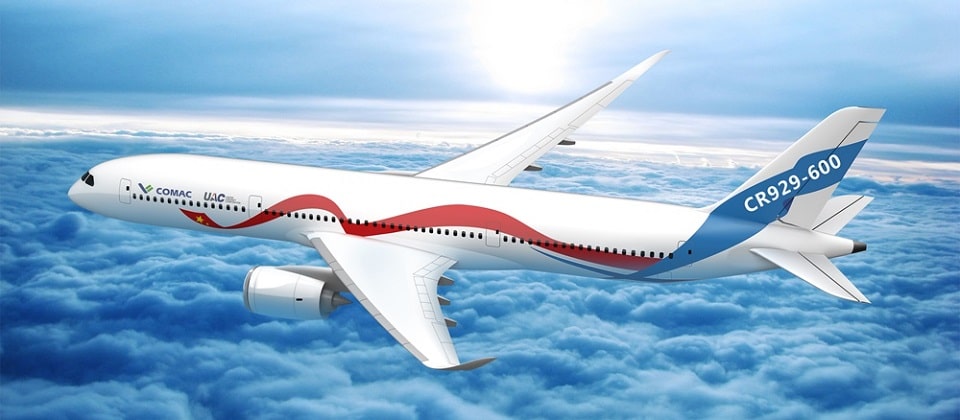Airlines
COMAC C929 Success Paves the Way for China’s Widebody Aircraft Dream

After the successful launch of the COMAC C919, China’s domestically built commercial aircraft, in collaboration with Chinese airlines, the country is now gearing up for its next aviation endeavor. Plans are in motion to enhance and develop a widebody aircraft.
Initially, there was a joint effort between Russia and China to develop this widebody aircraft. However, due to geopolitical and technology-sharing concerns, Russia withdrew from the project. As a result, China is now determined to proceed with the development of its own commercial widebody aircraft.
The C919 aircraft, while impressive, is a narrow-body aircraft that incorporates some Western components, including engines and avionics, which play crucial roles in its construction and operations. China’s future vision includes equipping the C919 with its own domestically produced engines within the next few years.
With the second-largest aviation market in the world, China’s aviation sector is experiencing significant demand for aircraft. Consequently, the nation is actively planning to launch its own widebody aircraft to meet the growing needs of its aviation industry.
The largest aerospace company in China, Comac, is moving forward with the design of a new widebody passenger jet. Despite claims that its joint venture with Russia to produce the plane has failed.
According to reports, UAC a major player in the Russian aviation industry, has left COMAC’s wide-body passenger aircraft development cooperation. The aircraft, which can carry 280 passengers, is now being promoted by the business as an entirely Chinese development, and Russia is no longer mentioned as a partner in the project.
According to COMAC’s prediction, the widebody project is projected to be operational by 2026–2027, and three variants of the C929 variants are anticipated.
The C929-500 variant, which can accommodate 250 passengers, has a range of 14,000 kilometers. The C929-600 variant, which can accommodate 280 passengers, has a range of 12,000 kilometers. The C929-700, the longest variant of the model, is anticipated to fly up to 10,000 kilometers.
The primary designer of the domestically produced C919, Wu Guanghui, stated that the widebody C929 model will have 60% less carbon emissions than the previous versions.

Airlines
Sanctions & Engine Issues Ground Half of Russia’s A320neo fleet

Russia’s aviation sector, already strained by Western sanctions, faces another setback as nearly half of its Airbus A320neo family aircraft are grounded due to unresolved engine issues.
This development highlights the growing challenges for russia commercial aircraft in maintaining their fleets under the weight of global restrictions and limited access to spare parts.
Out of the 66 Airbus A320neo and A321neo jets in Russia, 34 are now out of service, according to the Kommersant business newspaper. These planes are powered by engines manufactured by Pratt & Whitney, a subsidiary of RTX Corporation.
DAMAC Air: Dubai’s New Luxury Airline Offers Free Flights for Registration
The engines are affected by a previously identified defect in the metal used for certain parts, prompting accelerated inspections and maintenance.
Sanctions have compounded the issue, blocking the supply of essential components from major manufacturers like Boeing and Airbus. Without proper maintenance, experts warn that these aircraft may face decommissioning as early as 2026.
COMAC Unveils Plans for the C929 to Rival Airbus and Boeing
Airlines like S7, which operates a significant portion of these grounded jets, plan to conserve the engines for future use during peak travel seasons. However, reports suggest that over 20 of S7’s Airbus planes have engines that have already reached the end of their operational lifespan. Recently, russia seeks assistance from kazakhstan’s airlines to bolster its domestic flights.
While some A320neo and A321neo planes in Russia are equipped with French-made LEAP engines, which are seen as less problematic, the challenges remain daunting.
The situation underscores the long-term impact of sanctions on Russia’s aviation sector and the increasing difficulties in keeping its modern fleets operational.
-

 Aviation2 months ago
Aviation2 months agoMicrosoft Flight Simulator Raises $3 Million to Bring Back the An-225 Mriya
-

 Airlines2 months ago
Airlines2 months agoQantas Engineers Stage Walkout Over Cost of Living Concerns
-

 Airlines2 months ago
Airlines2 months agoQatar Citizens Can Travel to the United States Without a Visa
-

 Aviation2 months ago
Aviation2 months agoQatar Airways bans these new Electronic Devices on plane
-

 Airlines2 months ago
Airlines2 months agoJapan Airlines Rolls Out Free Domestic Flights to International Passengers
-

 Defence2 months ago
Defence2 months agoWhich Country Has the Largest Fleet of Fighter Aircraft?
-

 Airport2 months ago
Airport2 months agoWestern Sydney Airport Welcomes Its First Plane After 6 Years of construction
-

 Aviation2 months ago
Aviation2 months agoDid you know ? Once Boeing 747 carried 1088 passenger in 1991








